We may be compensated if you purchase through links on our website. Our team is committed to delivering honest, objective, and independent reviews on home products and services.
If you’re Elmer Fudd, you thwart carrot thieves by sending an Acme Pest Control robot after Bugs Bunny. If you’re a seasoned gardener, you know that fencing in your tomatoes, peppers, herbs, and other edibles is the way to go. Our version fends off two varieties of varmints, with wide, welded-wire mesh panels to keep out rabbits and dogs and tighter, polyvinyl chloride (PVC)-coated galvanized wire buried below to stymie subterranean-bound woodchucks and moles.
A gate at each end allows you to wheelbarrow in garden amendments such ase mulch and compost. This Old House senior technical editor, Mark Powers, shows you how to use common building materials—and not mechanical mercenaries—to preserve and protect your hard-grown produce.
You can find most materials at The Home Depot and Critterfence.
Step 1
Critter-Proof Fence Overview
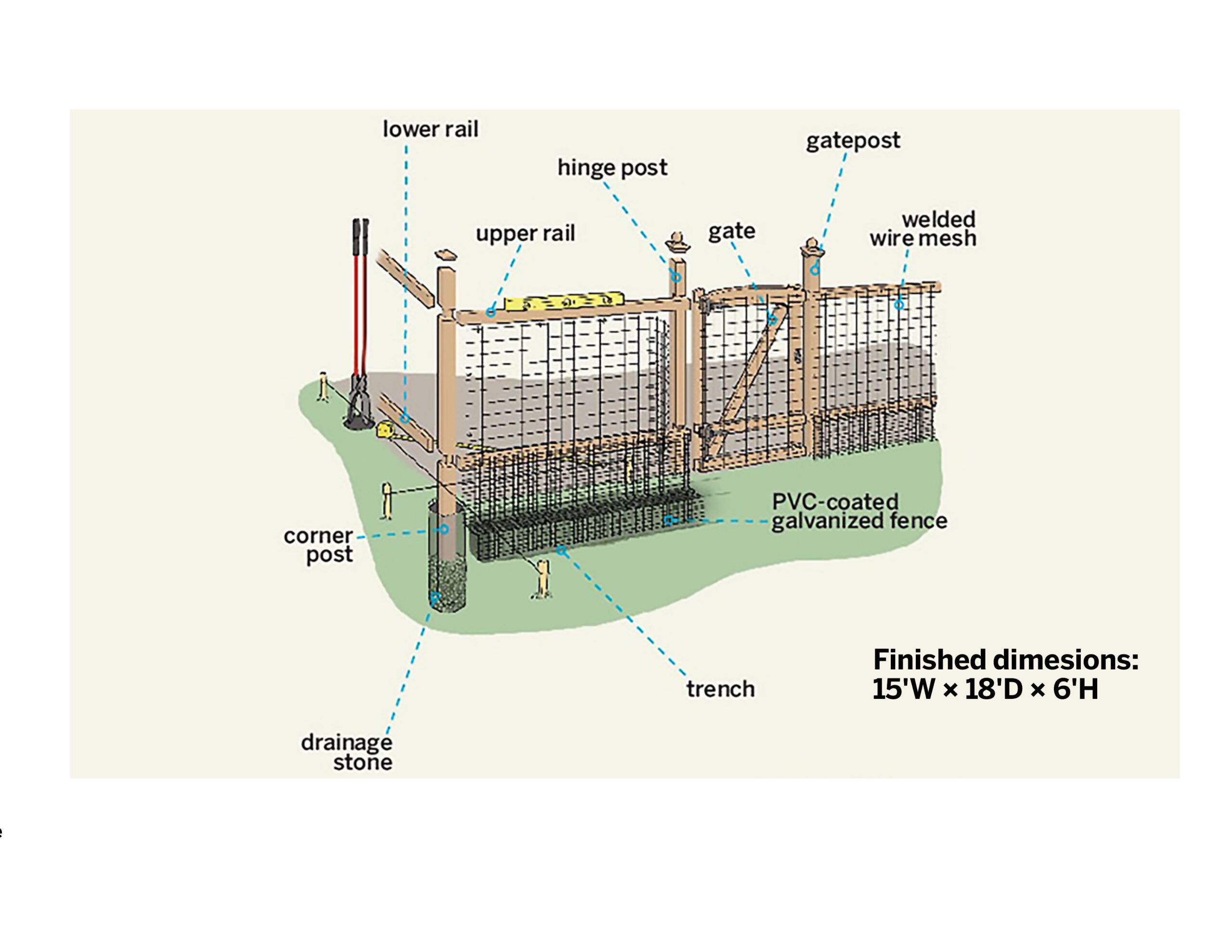
A critter-proof garden fence is a two-day project that requires moderate skill and attention to detail. The fence consists of pressure-treated posts and rails, welded wire mesh, and buried PVC-coated wire to protect against burrowing animals. Gates at each end allow convenient access with a wheelbarrow, making bringing in mulch, compost, and other gardening supplies easier.
Here’s a brief overview of the project timeline:
- Day 1: Install posts and rails.
- Day 2: Attach the mesh and build gates.
When planning your fence, consider the following cut list for materials:
- 10 4-by-4 corner posts at 10 feet each (or 12 feet for severely sloped terrain)
- 16 2-by-4 rails cut to fit
- Two 2-by-4 diagonal braces cut to fit
- Two 2-by-4 gate bottom rails at 34 inches each
- Two 2-by-4 gate stiles at 57 1/2 inches each
- Two 2-by-6 gate top rails at 34 inches each
Selecting high-quality materials helps your fence remain durable and weather-resistant, providing long-term protection for your garden.
Step 2
Square the Corners
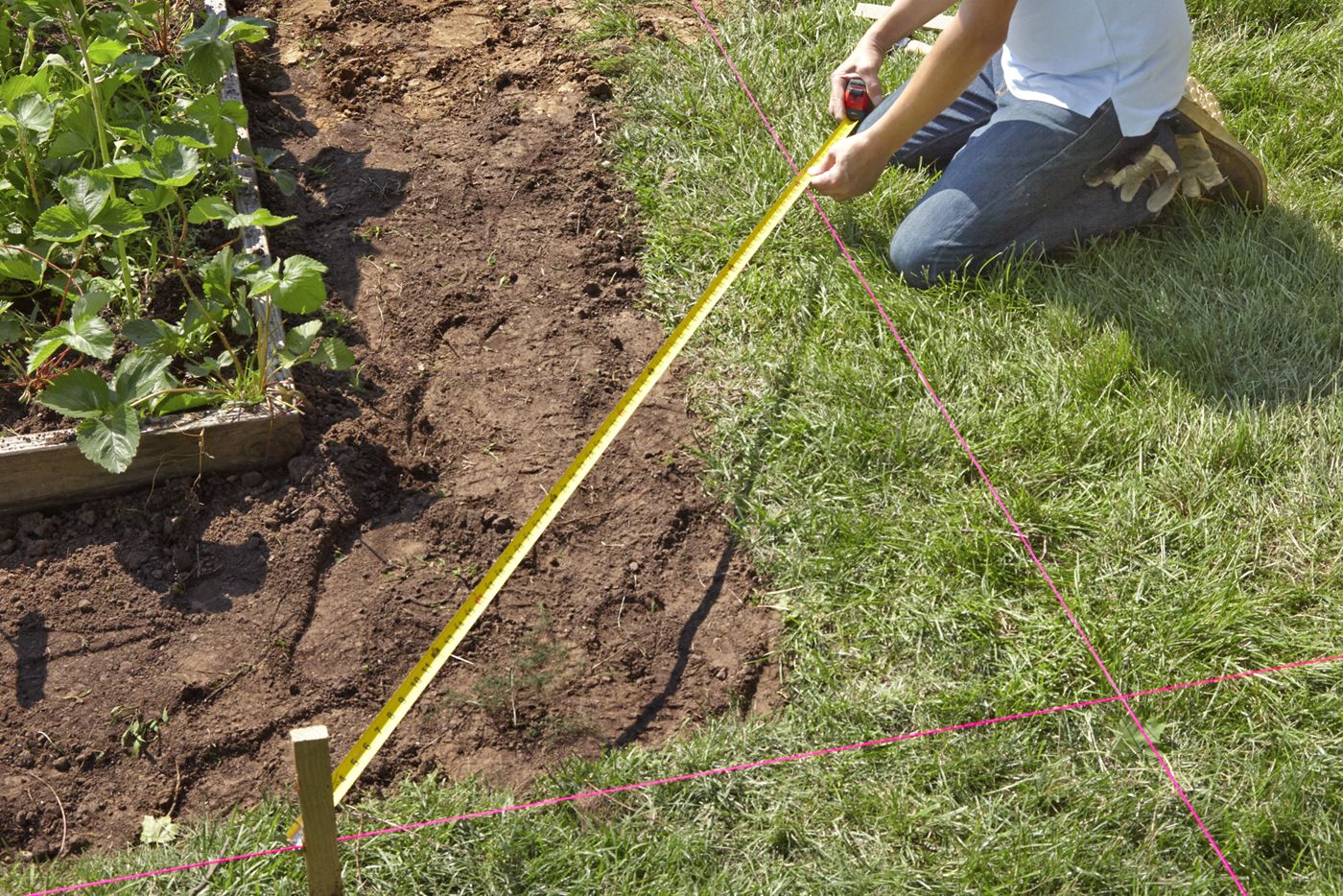
Squaring the corners is a necessary first step in properly aligning your fence. Begin by roughly marking the four corners of your intended fence area. Use 2-foot-tall stakes and mason line to outline all four sides, extending the lines several feet at each end so they cross at the corners.
To square the corners accurately, employ the Pythagorean theorem:
- Hammer a stake 3 feet from one pair of intersecting lines, touching the string.
- Use a felt-tip marker to mark 4 feet from the same corner on the other line.
- Measure between the stake and the mark–the distance should be 5 feet.
- Adjust the marked line until you achieve the correct 3-4-5 triangle.
- Repeat this process for the remaining corners.
It’s important to note that understanding how animals are getting into your home or garden is necessary before tackling this step.
Step 3
Find the Height
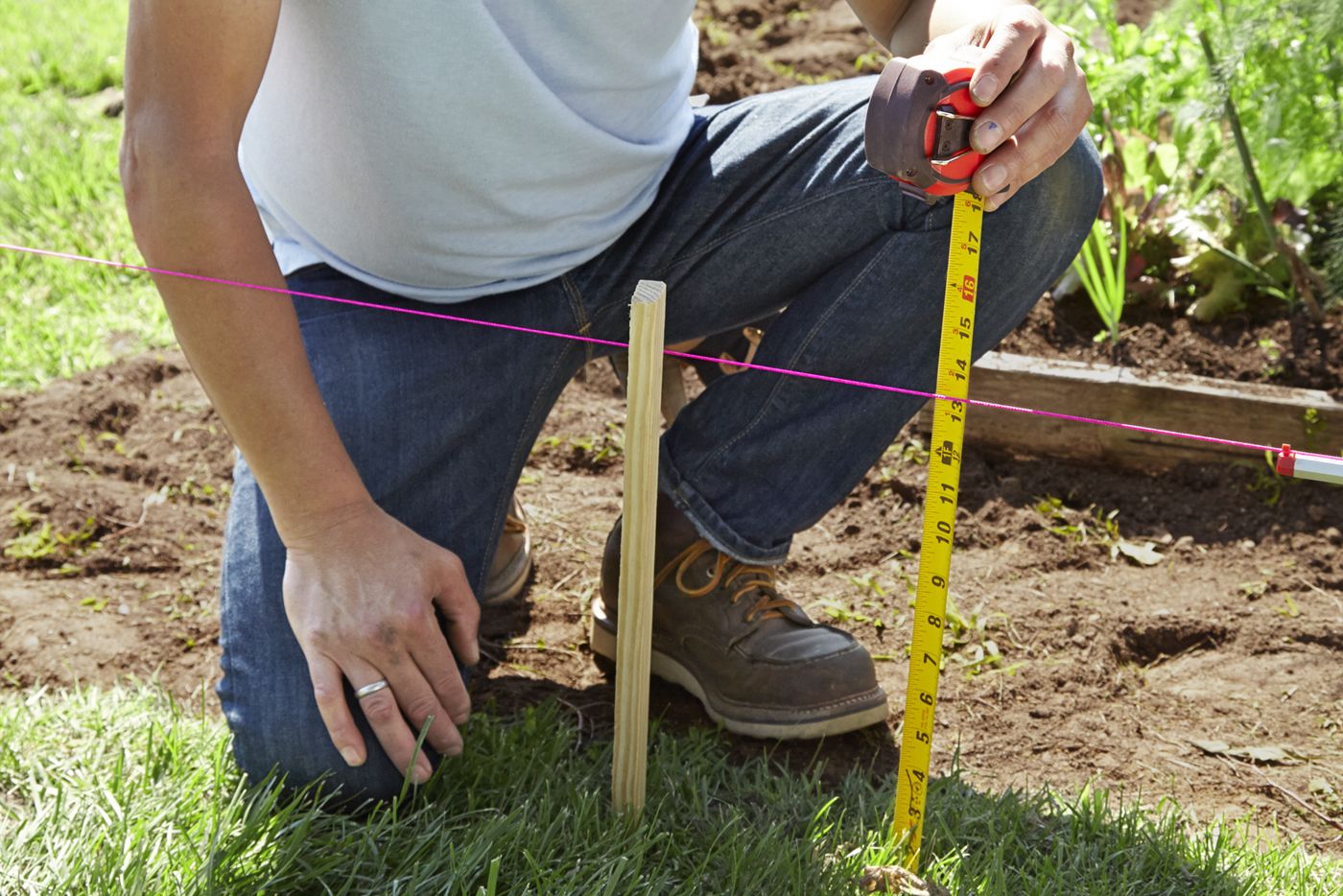
Determining the correct height for your fence is necessary for looks and functionality. To establish a consistent height:
- Hang a string level on each line and level it about 12 inches off the ground, representing the top of the lower rail.
- If the garden area is level, simply notch the location of the strings on each stake.
- Measure between the level lines and the ground at each corner for sloped gardens.
- If the difference between the four corners is more than a foot, use 12-foot posts in the low corners to accommodate the grade change.
A consistent height allows your fence to maintain a uniform appearance while effectively adapting to the natural contours of your garden.
Step 4
Mark the Post Locations
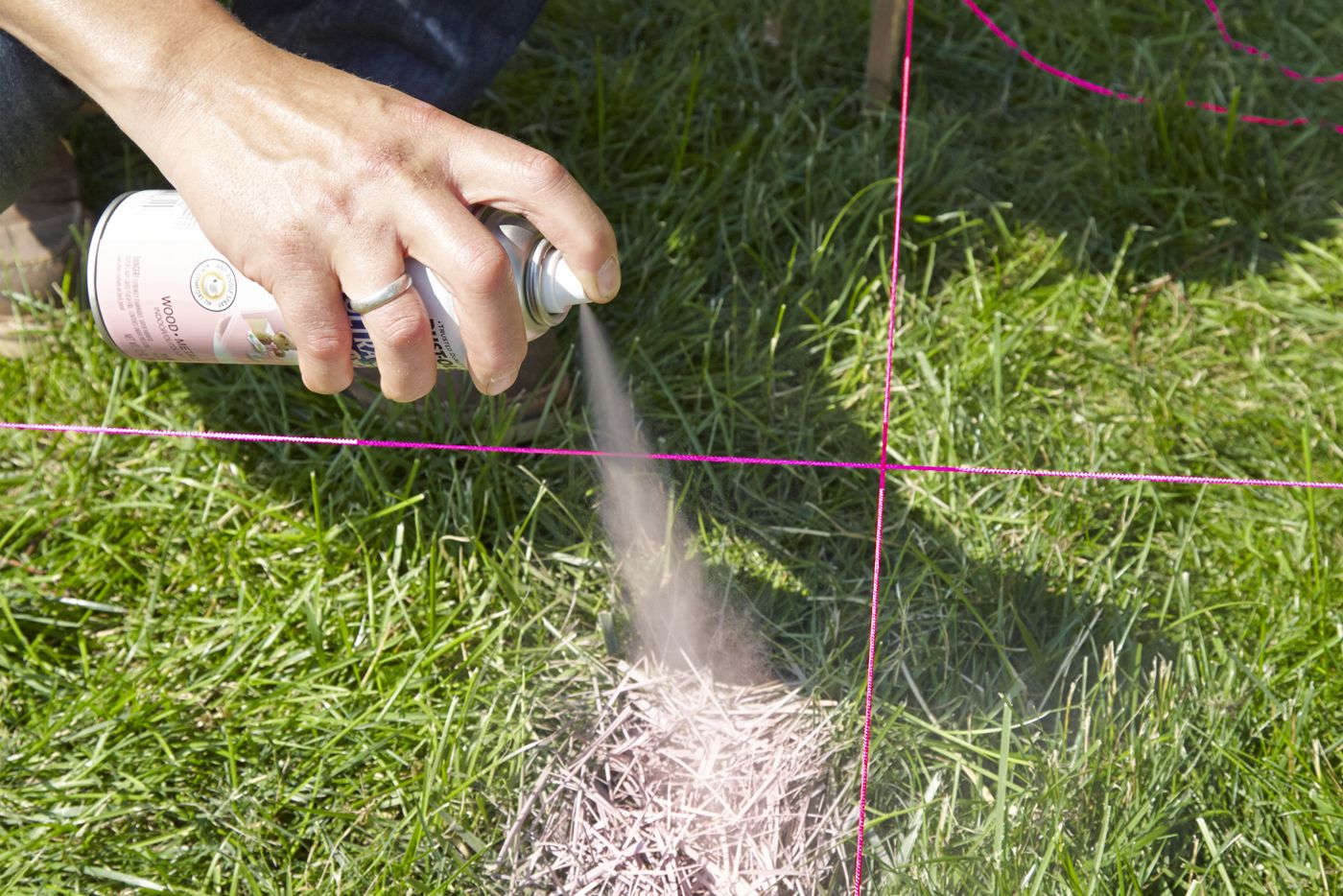
Properly marking post locations is important for creating a sturdy and well-spaced fence. Follow these steps:
- Use spray paint to mark the location of each corner post.
- Measure off the string lines to determine the positions of the field posts, spacing them 8 feet apart.
- Mark these locations just inside the strings.
- Mark the locations for the gateposts 36 inches apart in the middle of two sides, allowing enough space for a wheelbarrow to pass through.
By carefully marking these positions, you’ll help distribute fence posts evenly and create properly sized gates for practical use.
Step 5
Prep the Postholes
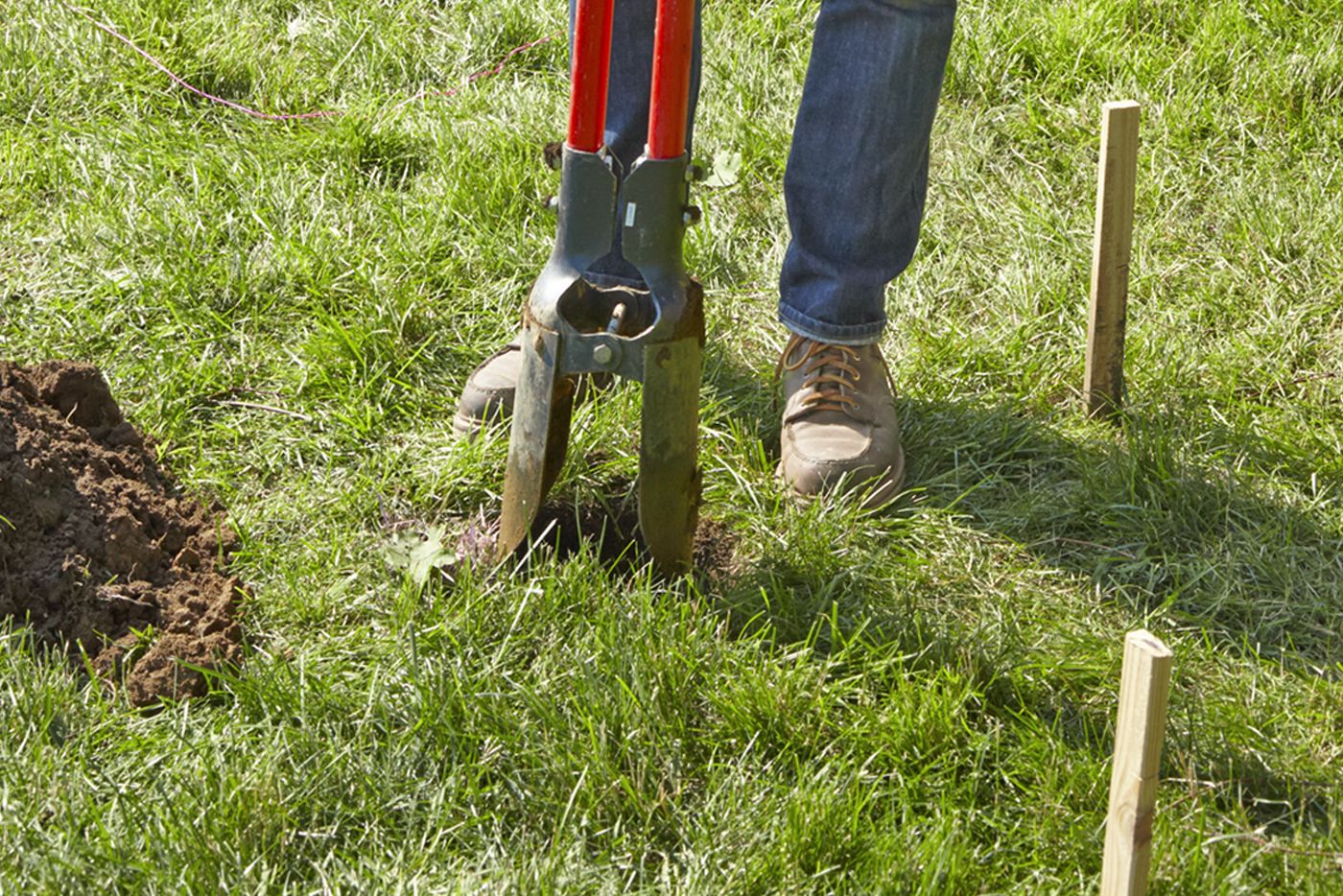
Preparing postholes correctly creates a stable and long-lasting fence. Follow these steps:
- Untie the guide lines and dig 8-inch-diameter holes.
- Confirm the holes are deep enough to get below the frost line and bury at least one-third of the post.
- Pour 6 inches of drainage stone into the bottom of each hole.
- Tamp the stone using the end of a post to create a solid base.
This preparation helps prevent frost heave and provides proper drainage, extending the life of your fence posts.
Step 6
Dig the Trenches
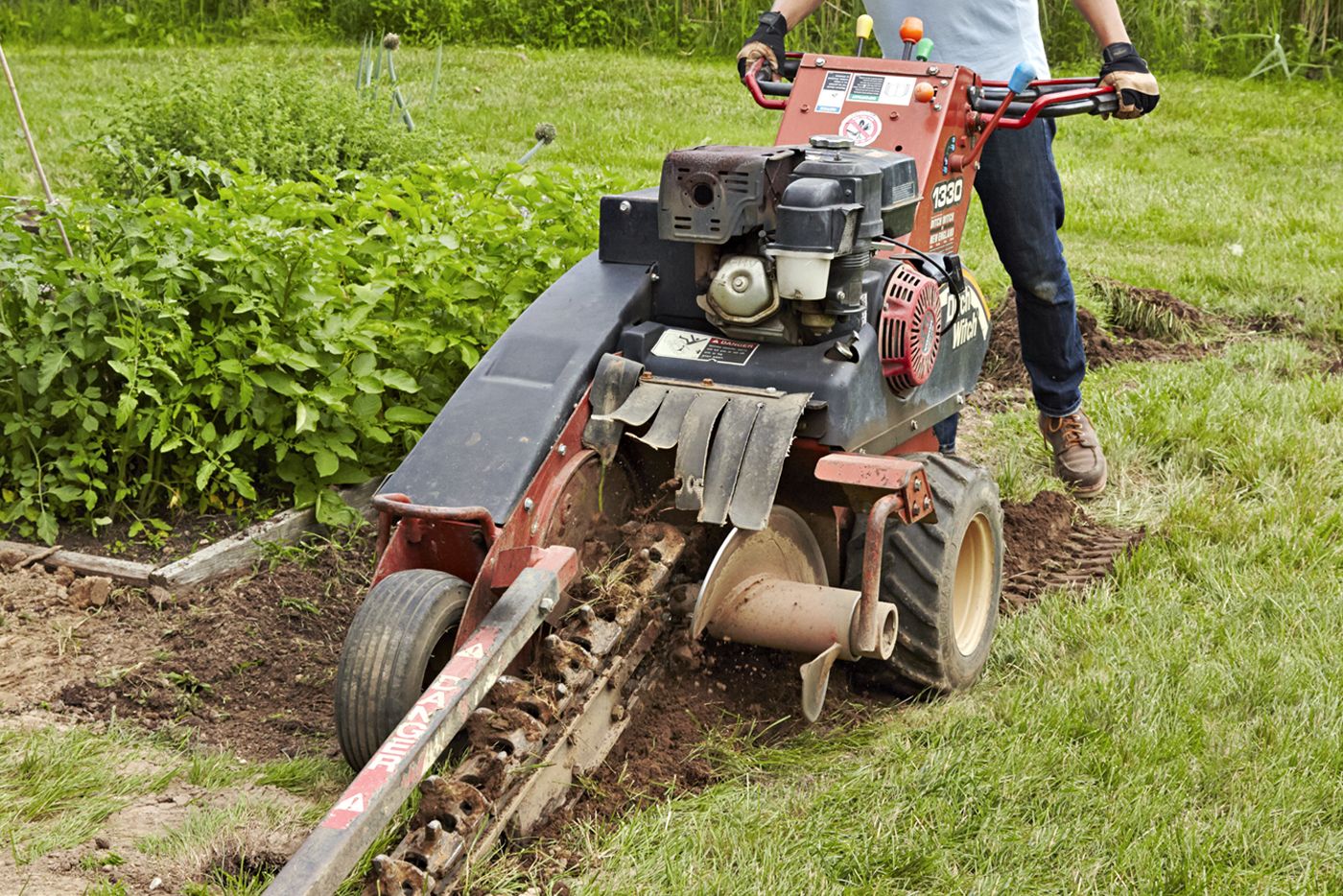
Digging trenches for the PVC-coated galvanized wire is necessary to prevent burrowing animals from accessing your garden. Here’s how to do it:
- Use a trencher for large projects or a spade and trenching shovel for smaller ones.
- Guide the trencher to dig just outside the postholes, cutting down about 18 inches.
- Use a spade to excavate the strip between the footings and the trench down 12 inches, creating a stepped ditch.
This stepped trench design allows for effective placement of the wire barrier while maintaining the structural integrity of your fence posts. Proper trench digging also helps prevent critters from burrowing under your fence.
Step 7
Mark the Corners
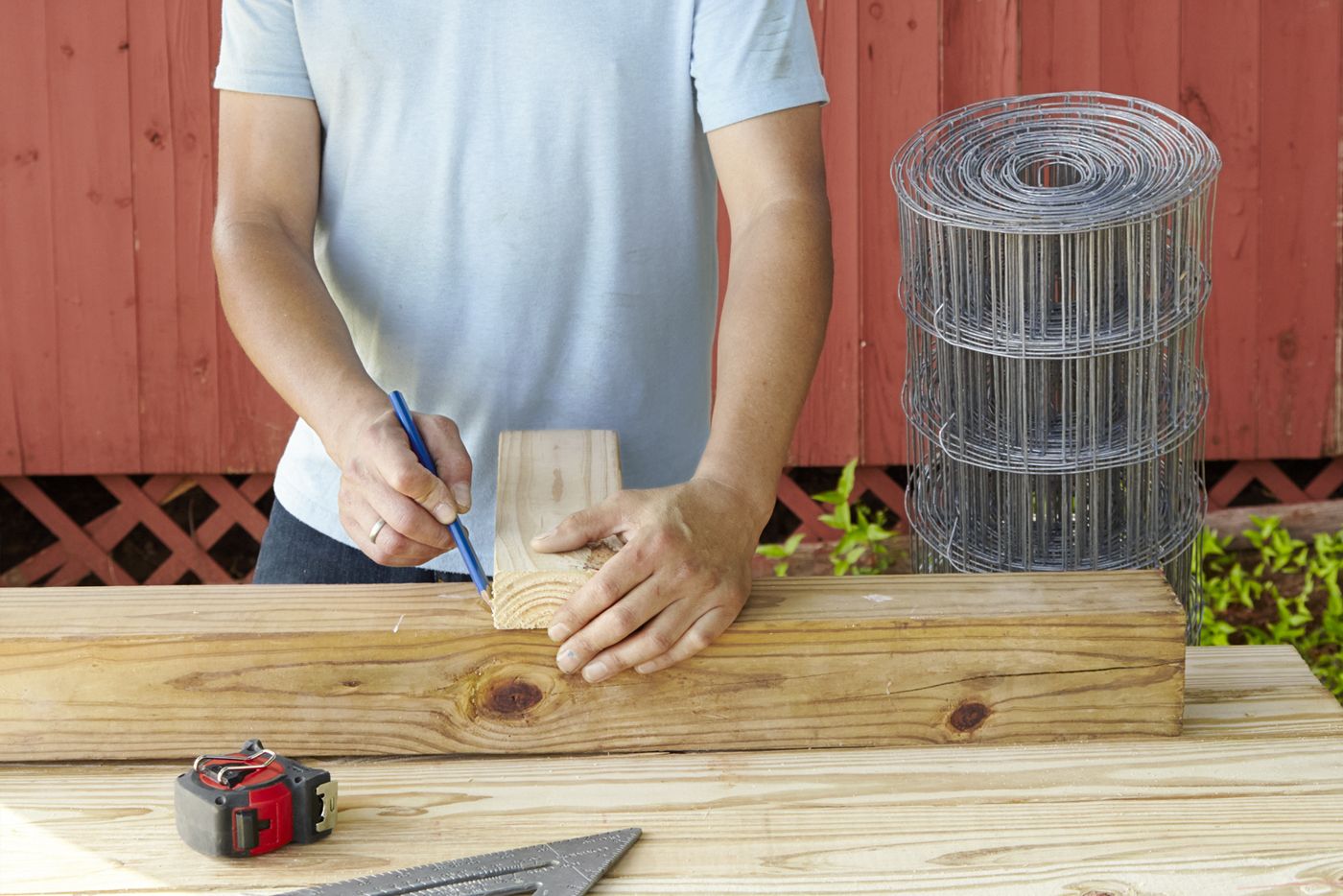
Properly marking the corners of your posts creates consistent rail placement. Follow these steps:
- Place a post on a work surface and use 2-by-4 scrap to mark the notch location for the upper rail 15 inches down from one end.
- Make a mark for the lower rail 56 1/2 inches away from the upper rail mark.
- Repeat this process on the other corner posts, using a rafter square to carry the marks around the corners.
- For field posts and gateposts, mark only one face.
Accurate marking is necessary for a well-aligned and visually appealing fence.
Step 8
Cut the Notches
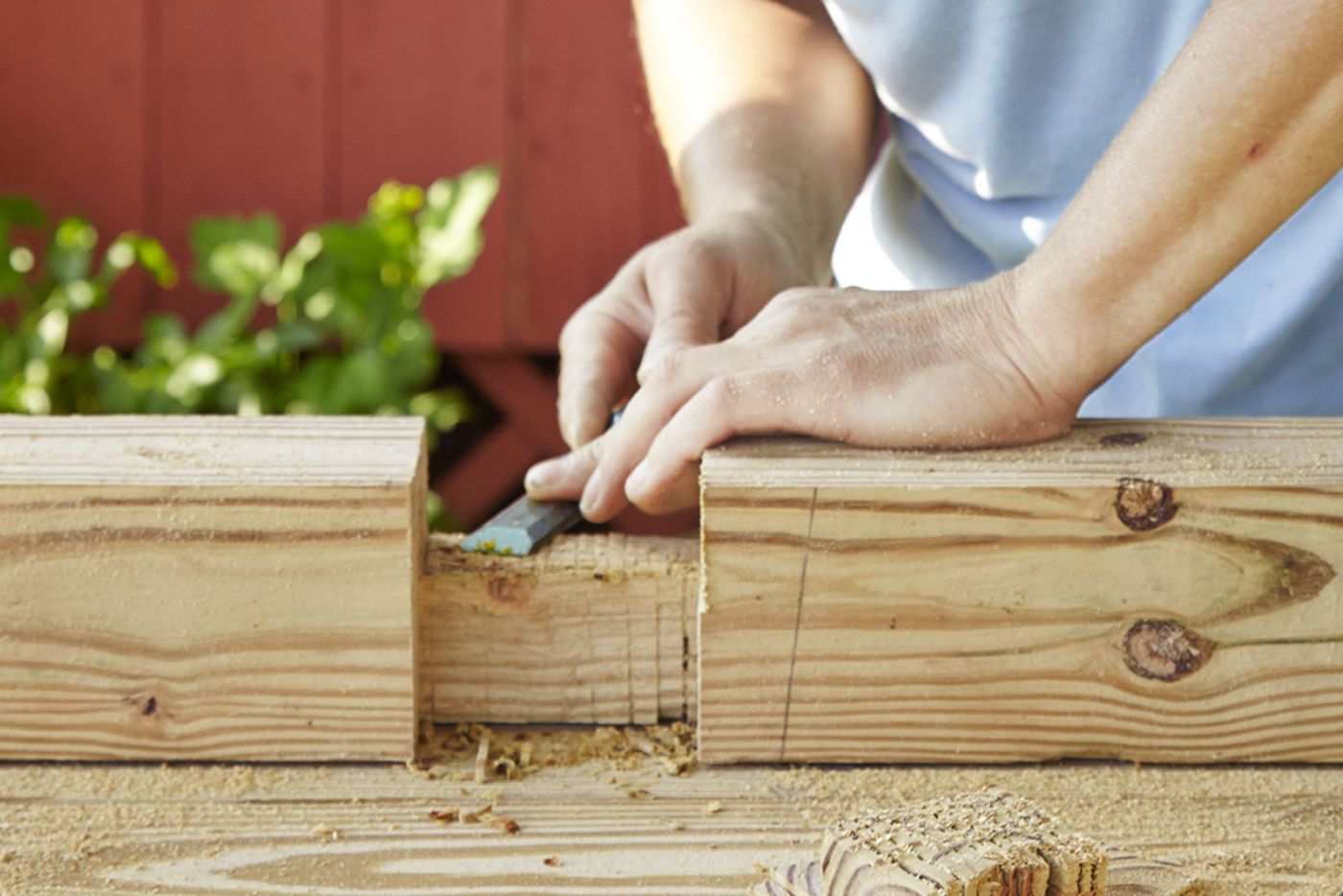
Cutting notches in your posts is necessary for securing the rails. Here’s how to do it:
- Use 2-by-4 scrap as a gauge to set the depth of the circular saw.
- Make several passes between the rail marks on two adjoining faces of the corner posts.
- Knock the slivers free with a hammer, then clean the notches with a chisel.
- Cut the field posts and gateposts in the same manner.
Tip: To clean out a notch effectively, rest the chisel’s wider face on the wood. Move the cutting edge in an elliptical pattern as you push the chisel forward.
Notching the posts accurately is necessary so the rails will fit snugly, providing strength and stability to your fence.
Step 9
Sink the First Corner Post
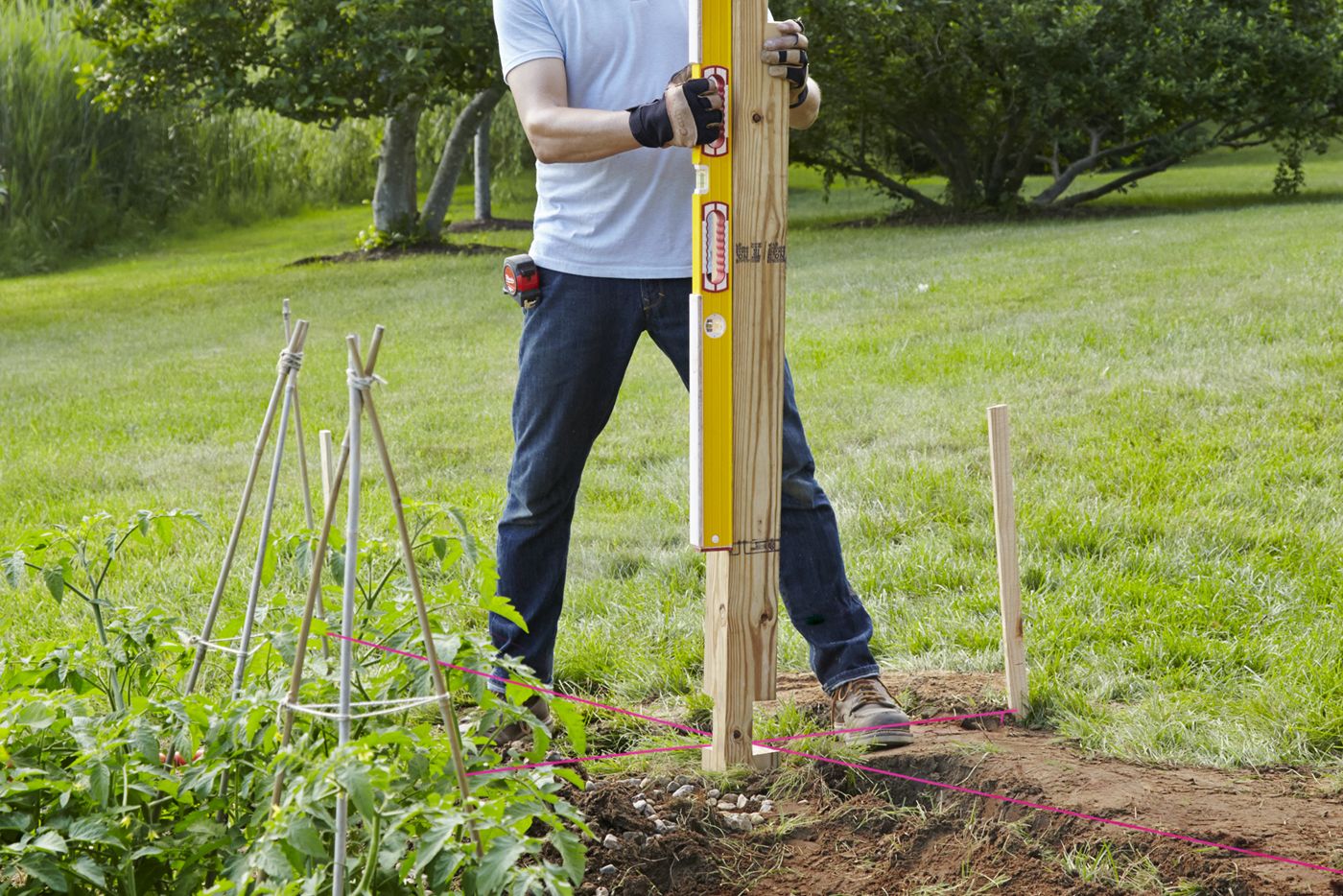
Setting the first corner post correctly is important for the overall alignment of your fence. Follow these steps:
- Restring the stakes using the notches made earlier.
- Drop a corner post into its hole and adjust the stone until the bottom of the lower rail notch meets the string.
- Verify the faces of the notched sides touch the string.
- Use a level to plumb the post in both directions.
- Backfill the footing with a mixture of excavated earth and stone, tamping it with a scrap of 2-by-4.
Taking the time to set this first post accurately will make the rest of the installation process much smoother. A well-set corner post is the key to a straight and sturdy fence.
Step 10
Set the Next Post
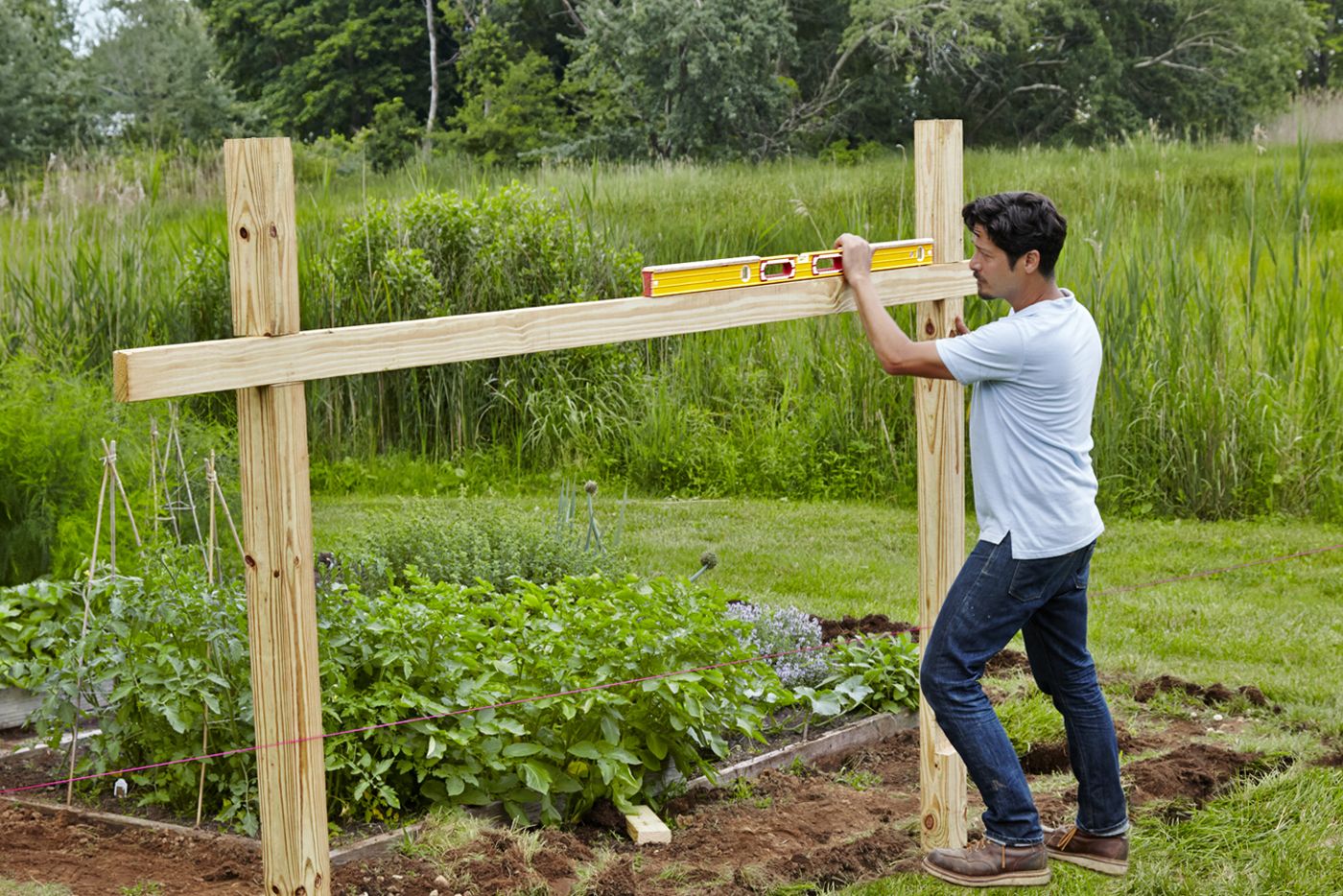
After setting the first corner post, it’s time to install the remaining posts. Here’s how:
- Drop a field post in the next hole.
- Temporarily screw a 2-by-4 rail into the upper notch of the first post and fit its loose end into the matching notch of the second post.
- Check the rail with a level and adjust the stone in the second post’s hole until the rail is level.
- Plumb the post, make sure its face touches the string, and backfill it.
- Remove and reuse the temporary rail to set the remaining posts.
- Use fast-setting concrete for the two hinge posts as backfill for added stability.
This method guarantees that all your posts are properly aligned and level, creating a solid foundation for your fence.
Step 11
Attach the Rails
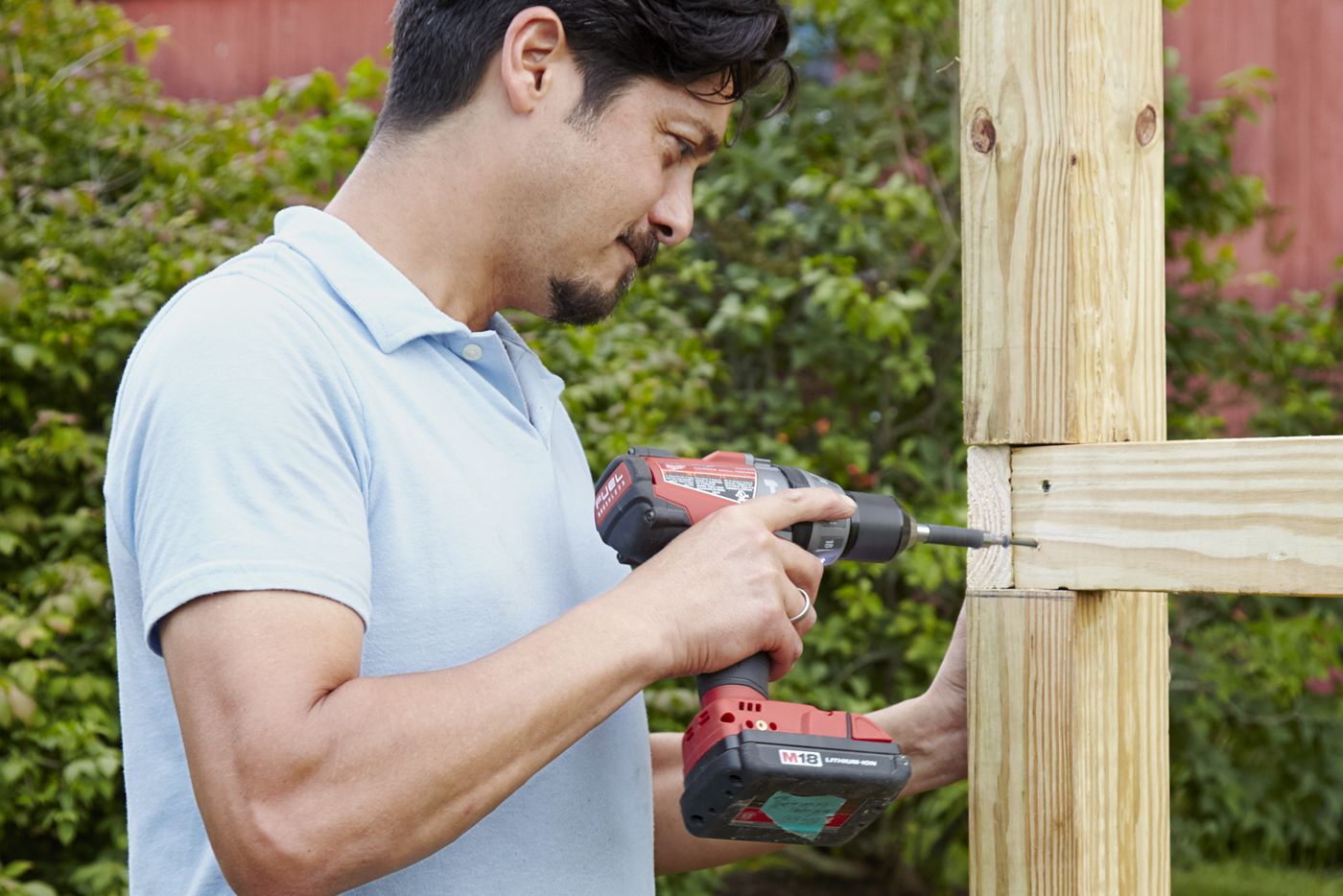
Attaching the rails is the next step in building your critter-proof fence. Follow these steps:
- Position an upper rail with one end in the corner post notch, leaving space for the perpendicular rail and the other end in the notch of the next post.
- At the overhanging end, make a cutline on the rail at the halfway point of the notch.
- Remove the rail and cut it to length with a circular saw.
- Align the rail in the notch using a 2-by-4 scrap, then attach it to the corner post with a pair of 3-inch deck screws.
- Attach the loose end with two more screws.
- Repeat this process for the remaining rails, skipping over the space between the gateposts.
Properly attached rails provide the structure and support necessary for your fence’s effectiveness.
Step 12
Staple on the Upper Fencing
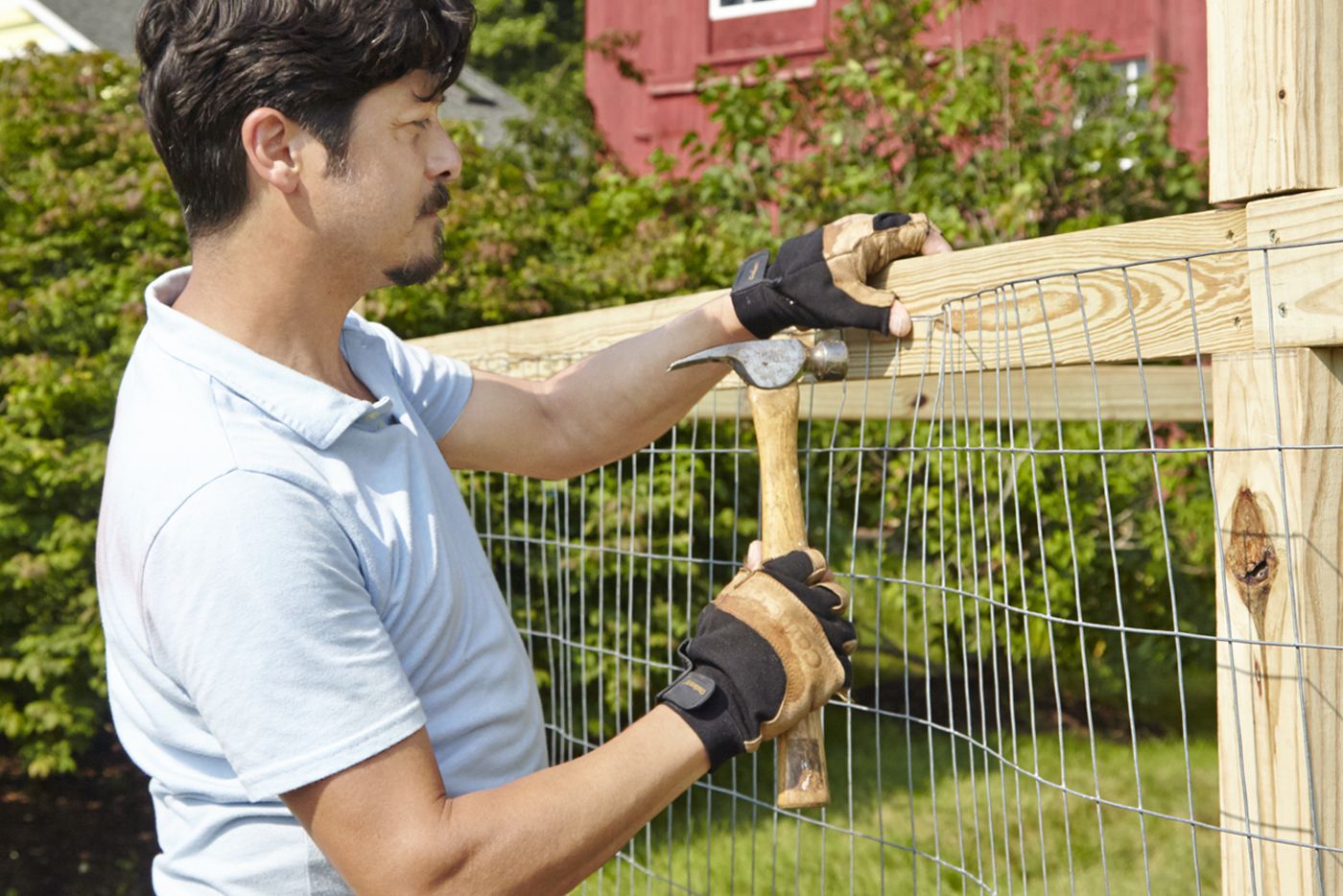
Installing the upper fencing creates an effective barrier against larger animals. Here’s how to do it:
- Begin by attaching the fencing to a corner post, hammering in 3/4-inch galvanized staples every 18 inches along its cut end.
- Make sure the top of the fencing lands in the middle of the upper rail.
- Staple the fencing along the upper rail, unspooling the roll as you go.
- Use linesman pliers to trim the fencing at the opposite corner post and staple it securely.
- Fasten the fencing to the middle posts and lower rail.
- Repeat this process for the remaining sides, skipping the space between the gateposts.
This step creates a sturdy barrier that will deter larger animals from entering your garden. Properly installed upper fencing is key to keeping out above-ground intruders.
Step 13
Add Lower Fence
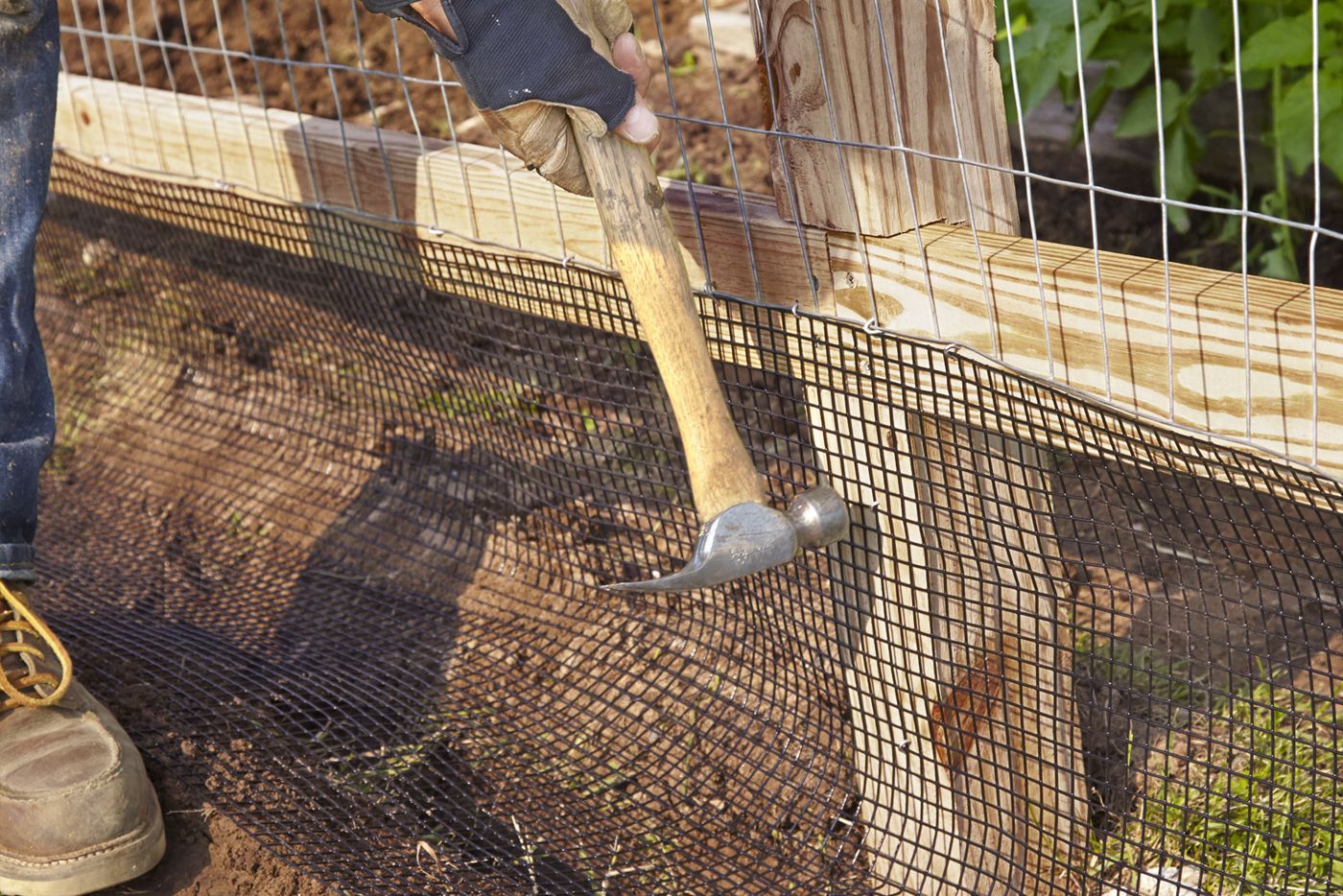
Adding the lower fence prevents burrowing animals from accessing your garden. Follow these steps:
- Use linesman pliers to trim the PVC-coated galvanized wire to the length of a fence side.
- Staple the top edge of the wire to the lower rail and posts.
- Push the fence down 12 inches into the trench.
- Use your hand to crease the wire away from the posts, forming a shelf to prevent burrowers from getting under.
- Bend the wire down into the channel.
- Repeat for each side of the fence.
- Backfill the trench with soil.
This underground barrier is important for keeping out persistent diggers like moles and groundhogs.
Step 14
Assemble the Frame
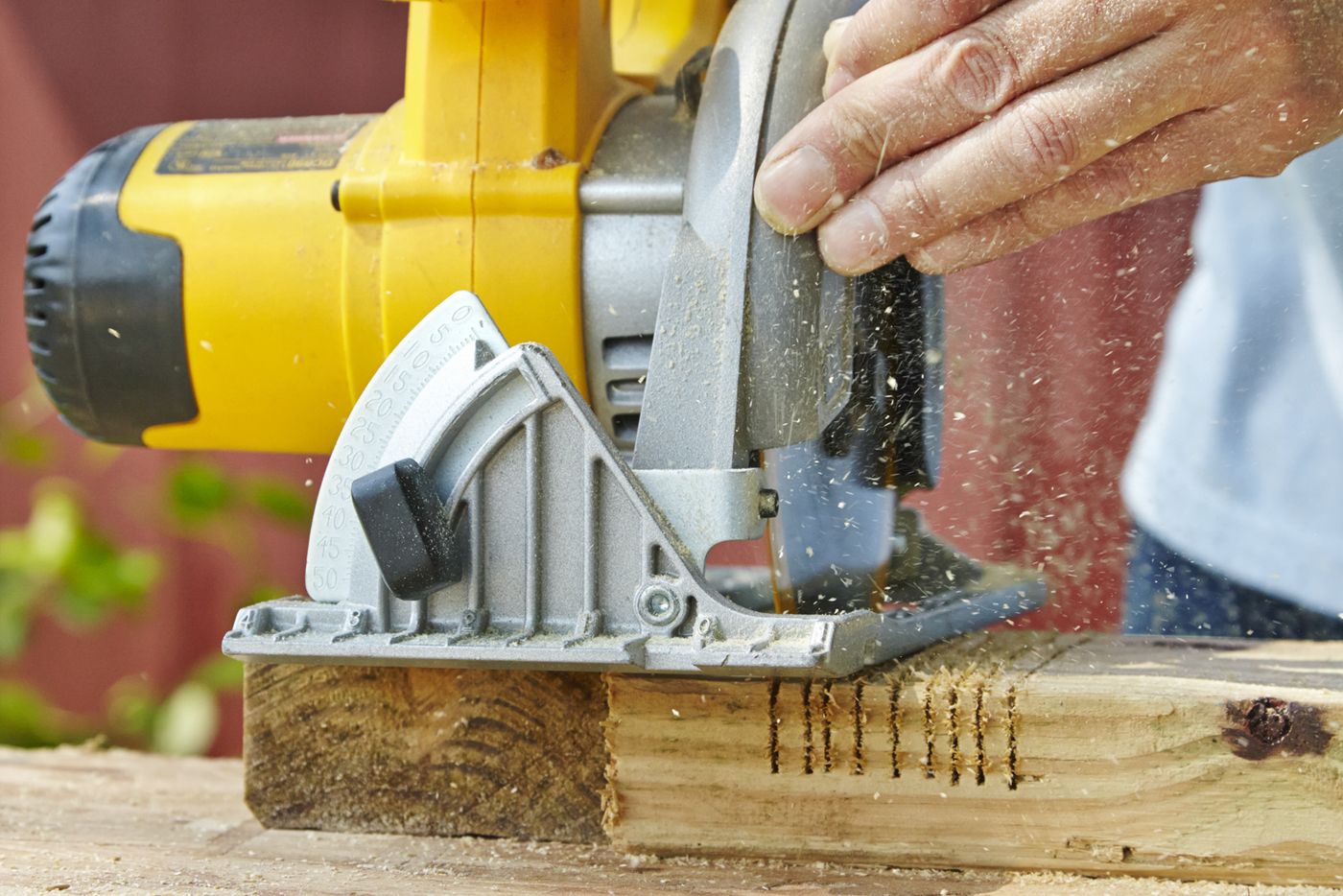
Creating sturdy gates provides easy access to your garden. Here’s how to assemble the gate frame:
- On a work surface, overlap the gate rails with the stiles.
- Keep the width about 1 inch narrower than the distance between the gateposts and as tall as the space between the rails.
- Square the corners with a rafter square and mark where the parts overlap.
- Set the circular saw depth to cut half the thickness of the material and notch half-lap joints with a series of cuts.
- Clear the notches as before, then screw the parts together with a pair of 1 1/4-inch deck screws at each joint.
This method creates a strong, well-fitted gate that will withstand frequent use.
Step 15
Arch the Top
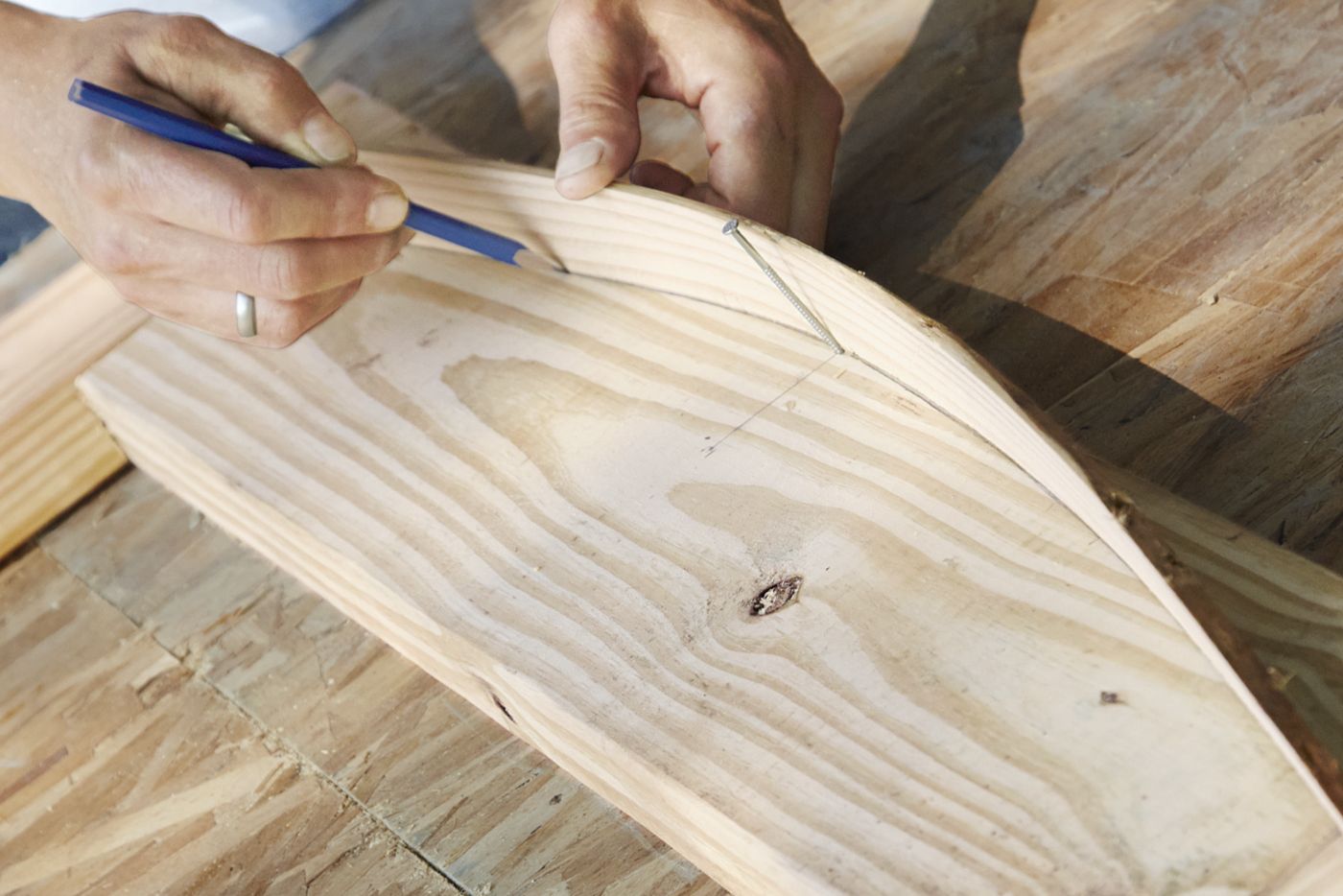
Adding an arched top to your gate enhances its appearance and functionality. Here’s how to create the arch:
- Drive a nail into the center of the 2-by-6 top rail, set in slightly from the top edge.
- Add one nail on each stile, centered on the rail’s width.
- Bend a length of scrap over the center nail and under the end nails; trace the curve.
- Cut the arch with a jigsaw, then round the edges with sandpaper.
This arched top not only adds visual appeal but also helps shed water, prolonging the life of your gate. An arched gate top enhances both form and function.
Step 16
Add the Brace
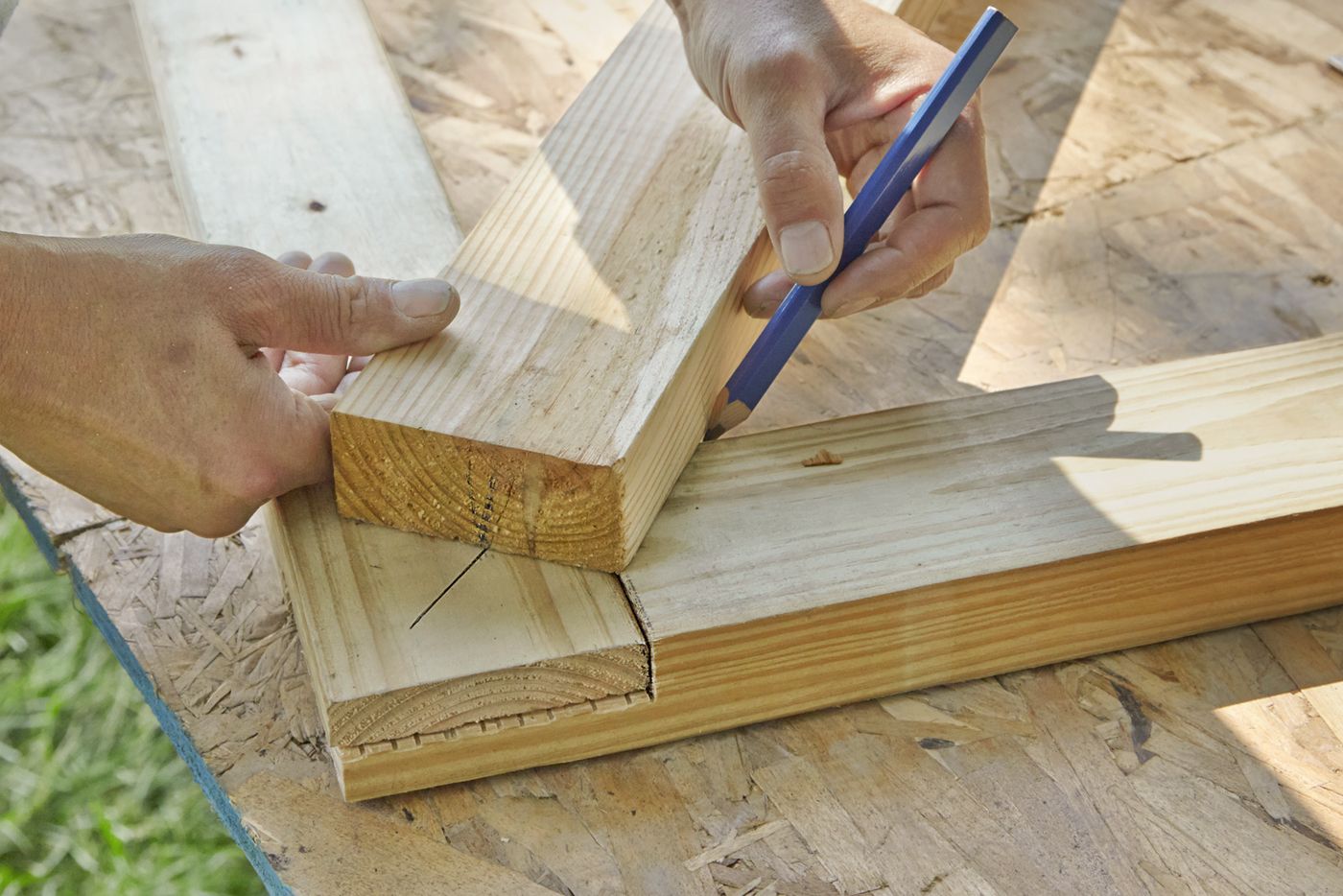
Adding a diagonal brace to your gate prevents sagging over time. Follow these steps:
- Rest a 2-by-4 diagonally across the gate with either end roughly centered on a corner.
- Mark where the brace overlaps the gate and transfer the mark up the edges of the brace.
- Cut the brace’s angled ends with a circular saw.
- Screw through the brace and into the gate with 3-inch deck screws.
- Cover the gate with welded wire mesh using staples.
- Repeat this process to build the second gate.
Tip: To prevent the gate from sagging, screw the brace in so the lower end points toward the lower hinge.
A diagonal brace is necessary for maintaining the structural integrity of the gate, especially in high-use areas. Proper bracing adds strength and longevity to the gate structure.
Step 17
Shim the Gate
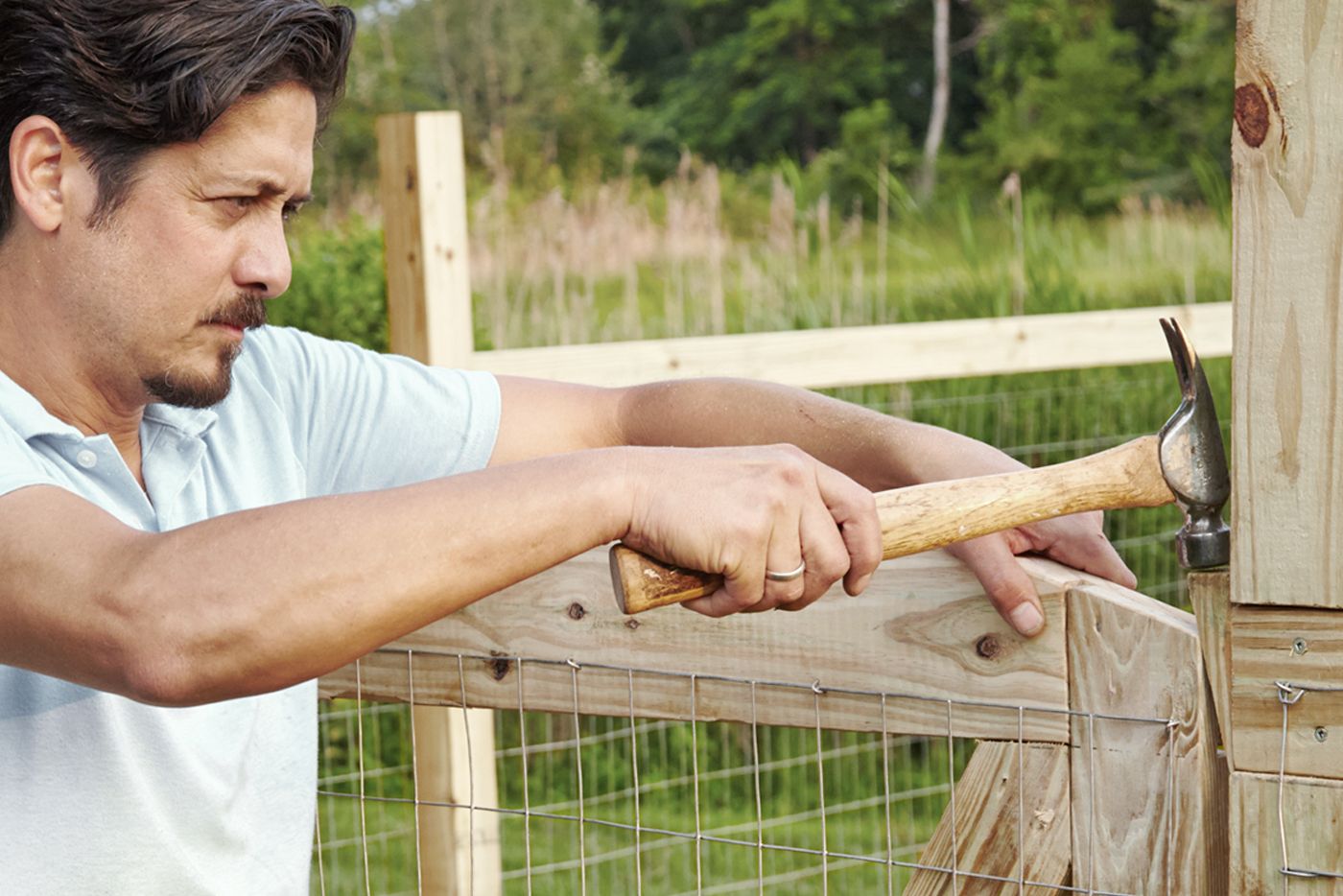
Properly shimming your gate helps it open and close smoothly. Here’s how to do it:
- Place the gate in the opening.
- Add spacers underneath until the gate’s lower rail is level with the ones on the fence.
- Center the gate in the opening by tapping shims in between the posts and the gate.
Correctly shimming the gate promotes smooth operation and prevents unnecessary wear.
Step 18
Add the Hardware
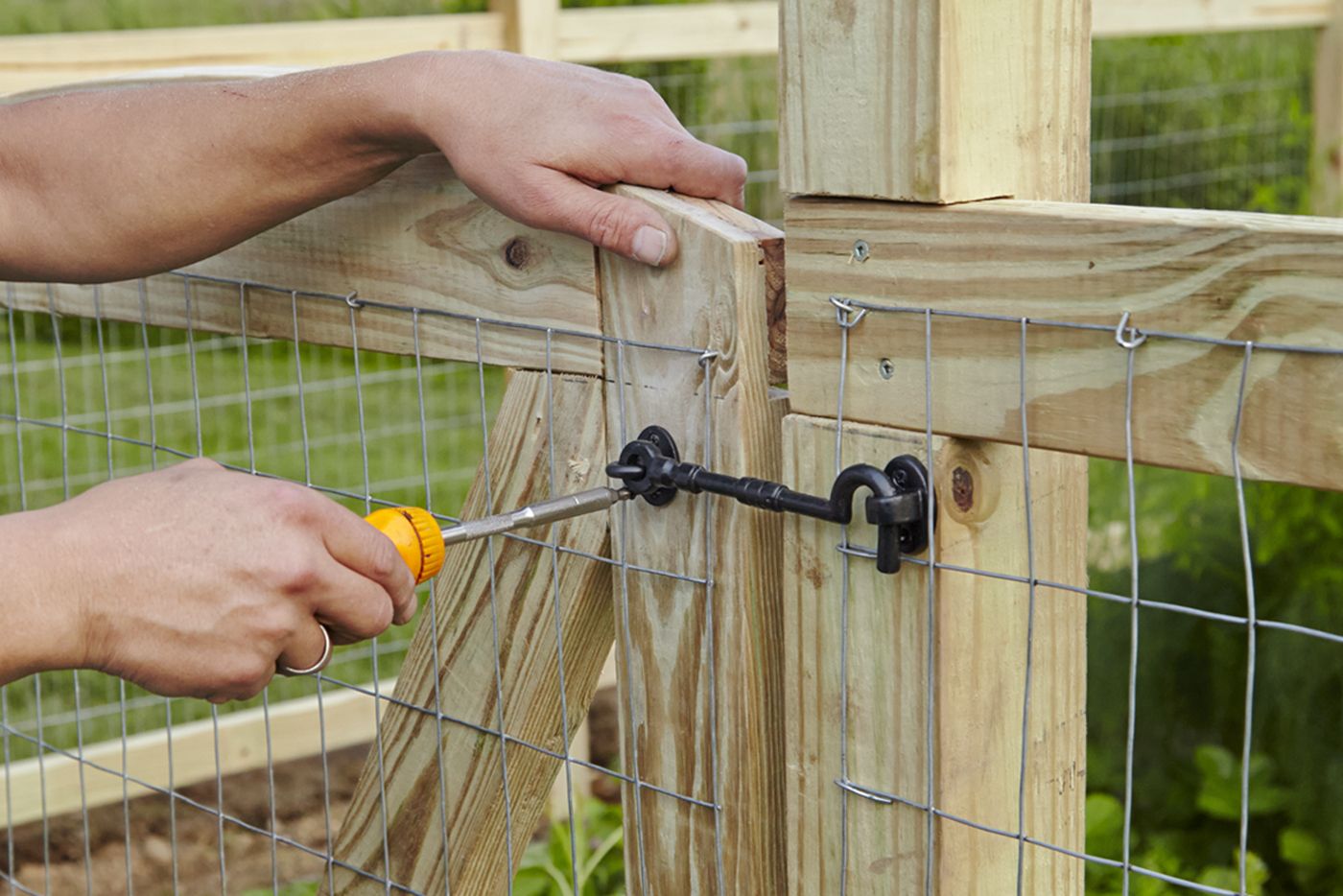
The final step in creating your critter-proof garden fence is adding the necessary hardware. Follow these steps:
- Position the strap hinges on one side of the gate and mark the location of the screws on the rails and hinge post.
- Remove the hinges, drill pilot holes, and attach the hardware.
- Repeat the process for the latch.
- Install the second gate in the same way.
- Finish the posts off with caps and finials attached with stainless-steel nails or construction adhesive.
With the hardware in place, your critter-proof garden fence is complete and ready to protect your plants.
Need help getting rid of pests? Check out our reviews on professional pest control companies.
Tools
Tools required include:
